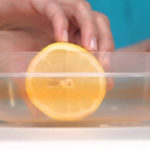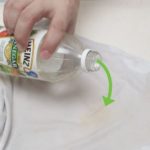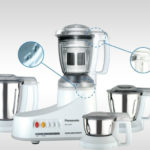When it comes to raw vegetables, many experts advise first rinsing them under running water to remove any possible parasitic eggs, and then soaking them in a mixture of water to dilute and eliminate any chemical residues that may cling to the vegetables. This convenient method is also applied by housewives to clean other types of food.
But what about raw chicken? Is it correct or incorrect to rinse raw chicken directly under the tap water? This is a concern for many housewives who want to ensure that their cooking methods are the most standard, hygienic, and safe.
Rinsing raw chicken under the tap water, is it correct or incorrect?
After buying chicken from the market, many people often rinse it directly under the tap water to remove any dirt clinging to the chicken, thinking that this method is more hygienic than rinsing in a basin of water. However, in reality, rinsing chicken under the tap water is not really effective in limiting bacteria. According to food safety experts, this incorrect method of rinsing raw chicken will make the bacteria more likely to spread, increasing the risk of cross-contamination.
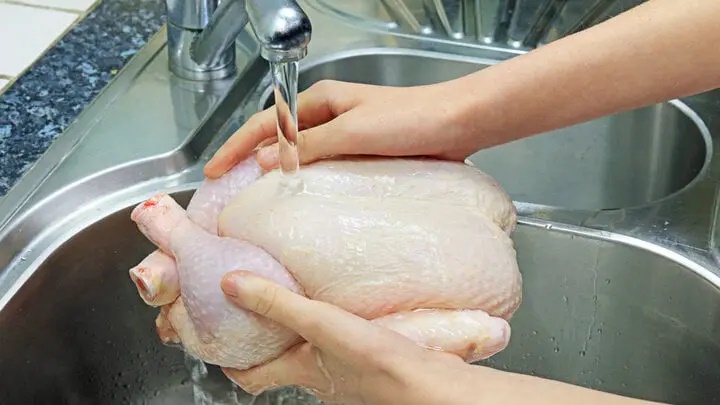
Rinsing raw chicken under the tap water, is it correct or incorrect? This method of rinsing will make bacteria easily spread in the kitchen. (Photo: Tasting Table)
According to The New York Times, Dr. Benjamin Chapman, from the Department of Agriculture and Human Sciences at North Carolina State University (USA), said that rinsing raw chicken under the tap water not only does not remove many bacteria but can also spread germs to the hands, the surface of the sink, clothes, utensils, or nearby food – a process called cross-contamination. This rinsing process actually increases health risks.
If you are worried that the raw chicken bought at the market is not hygienic, not well-cleaned, or if the surface of the chicken has dirt clinging to it, you can put water in a fixed basin, add a pinch of salt to thoroughly clean it, avoid splashing water.
The correct way to rinse raw chicken
If you want to remove bacteria from chicken, the best way is to soak the chicken in diluted saltwater for about 20 minutes. The impurities in the chicken will slowly excrete and be cleaned. After that, you should rinse the chicken with cold water several times to remove bacteria. When cooking chicken, you should cook it thoroughly, rather than eating it raw, to avoid getting sick.
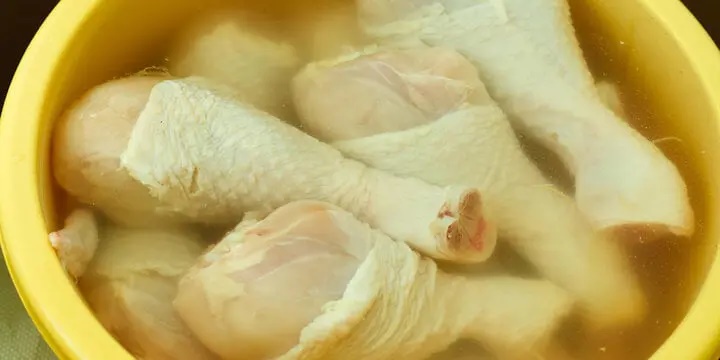
Soak chicken in a basin of diluted saltwater for about 20 minutes to allow the impurities in the chicken to slowly excrete, then rinse with cold water several times. (Photo: The Today Show)
In addition, the hygiene process after processing raw chicken also needs attention. If you chop, slice, and rinse the chicken, you need to clean the utensils used, such as containers, knives, cutting boards… and surrounding objects with soap or specialized cleaning solution to ensure cleanliness and dryness.
It is best to wear gloves when handling raw meat. If handling with bare hands, wash your hands with soap and running water for at least 20 seconds after handling. Avoid directly touching your eyes and nose with your hands when coming into contact with fresh ingredients during the process of buying, cleaning, and preparing them.
When storing, place raw chicken in the last compartment of the refrigerator or wrap it in a bag to prevent bacteria-laden water droplets from sticking to other food.
After buying raw chicken from the store, it should be put into the refrigerator immediately, avoiding leaving the chicken outside for too long. Although the temperature of the refrigerator is not sufficient to kill Campylobacter bacteria, it can inhibit their rapid growth.
To defrost chicken, it is best to use a microwave or rinse it under cold tap water. Avoid thawing naturally at room temperature as it can promote the rapid development of bacteria, causing food poisoning.
Source: VTC News


























